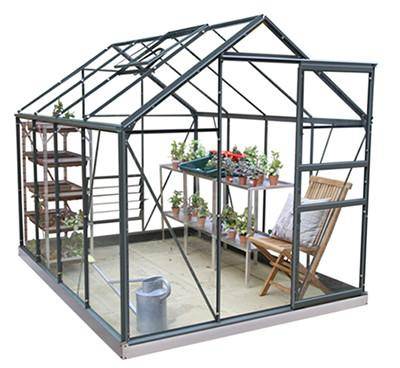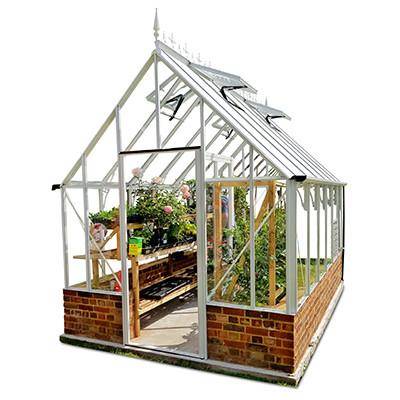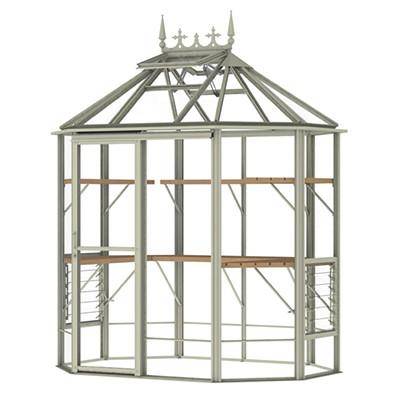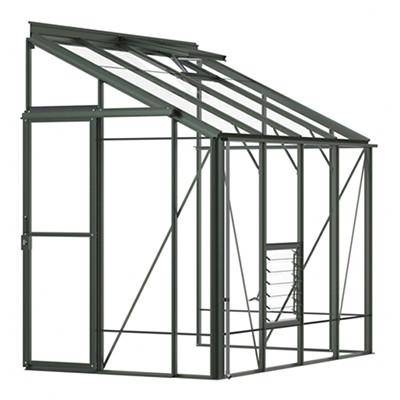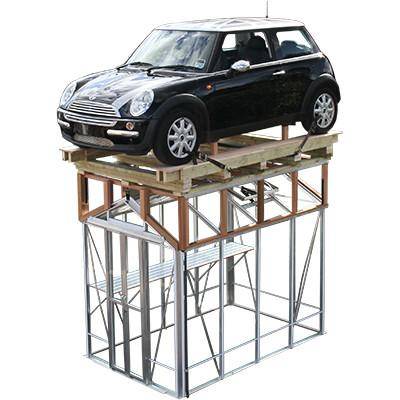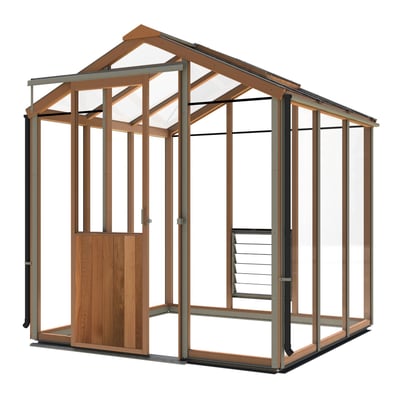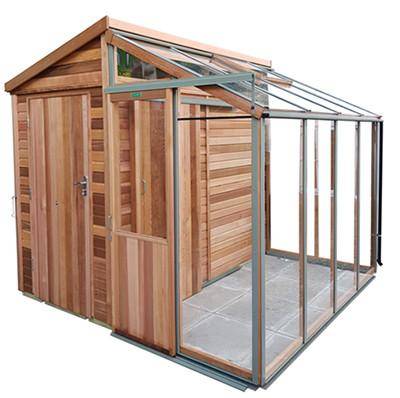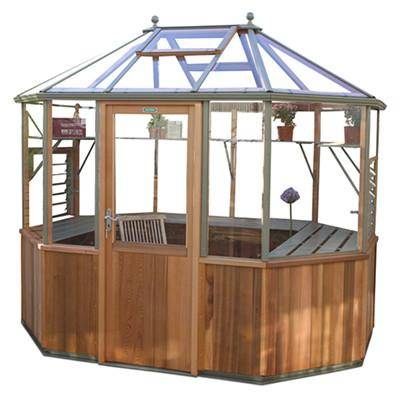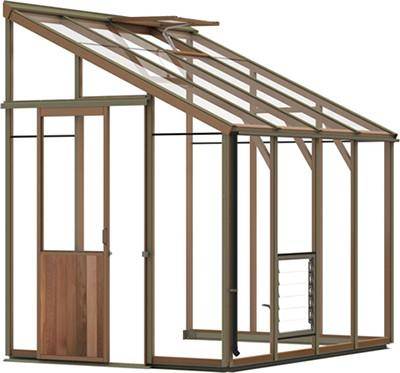1. Buyers Guide - Choosing a position in your garden
In an ideal world, with plenty of suitable land on which to site your new greenhouse, with cost not being an issue, the growing capacity you require is likely to determine the size and style you finally choose. Without both space and budget constraints, your choice is vast! Realistically, however, your eventual choice of greenhouse is likely to boil down to how much available space you have in your garden. Ideally, you will want an area that catches most sunshine, which can be easily levelled to provide good foundations and also has convenient access.
Survey your garden
If you start by doing this first, you'll quickly identify all the options you have for the best position for your new greenhouse. There are six main factors to bear in mind:

1. Best position and aspect
Many "text books" recommend that a greenhouse should be positioned so that the ridge-line of the roof lies east to west to ensure that the longest side of the greenhouse will be fully exposed to the sun from the south. While there is an advantage in following this advice, particularly for long greenhouses such as 8' by 20', our advice is not to overestimate its importance. Why? Because the most common sizes of greenhouses, such as the 6' by 8' and 8' by 10', are virtually square, so an east to west orientation makes little practical difference. It's sufficient to position any one side of a small or medium sized greenhouse in a south or southwest facing aspect for best exposure to sunlight.
However, don't worry if this isn't possible, because at between 7' and 8' tall, even if only the roof catches direct sunlight, this will be sufficient to considerably warm-up your greenhouse. Anyway, it's a fact that the first thing many gardeners do is to shade their new greenhouse with green netting or blinds!
2.Good foundations for the greenhouse base
A level, or almost level, site will require less work to achieve a good floor area for the foundations of your greenhouse. The most popular method is to lay flag stones, ensuring an overlap of at least 6 inches outside the dimensions of the greenhouse base. We wouldn’t recommend fixing your greenhouse directly on to soil, as it’s not nearly as secure or as strong as bolting the base of the frame to a hard surface. Flag stones also have the added benefit of allowing free drainage, as opposed to a solid concrete base, which will collect puddles.
Traditionally, greenhouses always used to sit on a little brick plinth. Now, however, most of the greenhouses in our range are supplied complete with a metal base. This means that you can fix the greenhouse straight onto either a concrete footing or a base made up of concrete slabs.
Greenhouse manufacturers make various types of metal base. Using our experience of installing greenhouses, we decided to offer our customers a base design that incorporates all the best features of these bases but which is simple to install and much stronger, in order to achieve an improved life-span.
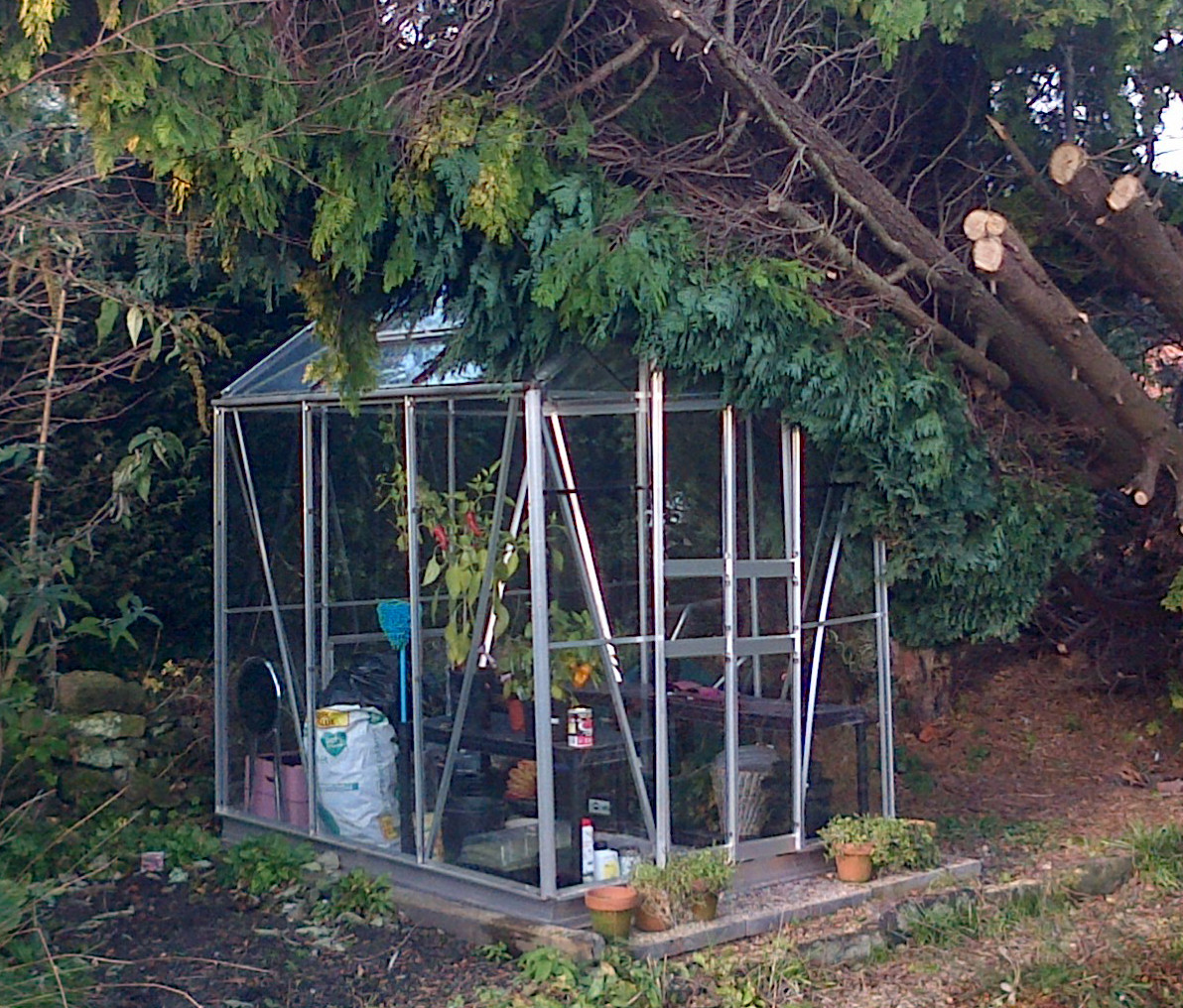 3.Shelter from the wind
3.Shelter from the windAll greenhouses, even the very best ones, are vulnerable to strong winds…….
………So if your garden is in an exposed position, then consider the proximity of hedges or fences that will provide some shelter from the direction of the prevailing wind.
There is a whole section of advice on preventing storm damage. Here is a quick checklist…
Choose a sheltered spot to site your greenhouse. Plant a hedge or erect a fence, as a windbreak, if exposed.
Ensure your greenhouse is anchored down to the slabs
Close doors, vents and louvres in windy weather.
You must ensure that your greenhouse is insured, as wind damage is not covered under any guarantee.
4.Avoid Trees
Apart from the risk of damage during a storm, trees provide excessive shade and fill the gutter with leaves, which block the down-pipes.
5.Ease of use and maintenance
When deciding on the position for your greenhouse, also consider how convenient it will be to gain access to it. It's surprising how many people overlook this point when placing their greenhouse at the very bottom of their gardens! On a dark, wet winter night you may not feel inclined to nip out to check that everything is OK in your greenhouse!
You will find that maintaining the appearance of your greenhouse will be much easier if you opt for whole pane toughened glass, instead of the traditional small glass panes, which is supplied as standard with most greenhouses. As well as being toughened, they look far neater and are far less prone to a build-up of algae along the edges of the panes, so making cleaning a simple job.
6.Services
Finally, consider how you will route water and perhaps an electricity supply to your chosen site. You will be surprised at how many useful greenhouse gadgets require electricity, for example, heaters, general lighting, growing lamps, propagators and automatic watering systems to name but a few!

